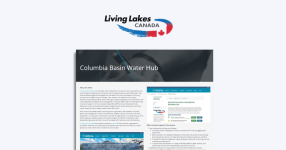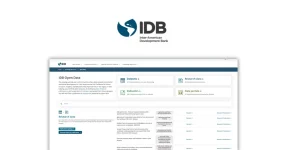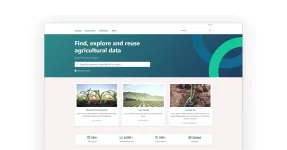Table of Contents
The Pacific Data Hub and its governance
The Pacific Data Hub is the primary hub for data-driven innovation across the Pacific region, fostering a collaborative network where Pacific Island countries and territories, regional organisations, civil society, technical experts and industry professionals all engage as equal partners.
Hosted at the Pacific Community (SPC), the region’s principal scientific and technical organisation, it began with the assistance of Link Digital in February 2018 and currently hosts nearly 800 datasets, covering everything from population statistics and fisheries, to gender, human rights, climate change, and oceans.
More than just a data portal, the Hub now acts as a system leader for data governance and innovation across the Pacific, catalysing novel data-driven solutions, and fostering an environment where diverse stakeholders co-design and implement impactful initiatives.
In the second of a two-part series of interviews with those working behind the scenes at the Hub and its connected sites, I spoke to Malcolm Fraser, Pacific Data Hub Programme Manager, about the Hub’s evolution, the nature of data stewardship in the Pacific, and the challenges of getting data into the hands of those who can use it.
Collaborative data stewardship
The Hub has evolved from just being a place to store the data collected by SPC since it was founded in 1947. It now fulfils the role as orchestrator to a regional network of data stewards, innovators and start-ups that embrace experimentation, rapid prototyping, and user-centred design, to create a network of collaborative innovation that adapts to the evolving needs of the Pacific region.
Supporting a data-centric, innovative ecosystem, the Hub now provides a resilient and culturally sensitive data infrastructure for the region, ensuring reliable, ethical, and accessible management of diverse datasets wherever they reside. From this infrastructure, the Hub’s data is actively used to create a range of connected products – such as websites and dashboards – often developed in direct response to member requests. In doing so, the Hub has become a vital mechanism for building data capability and fostering a uniquely Pacific approach to data stewardship.
Fraser contends that solely focusing on the stages that inform a decision to add another dataset, site or dashboard to the Hub, my initial question to him, misses a broader point.
What is important is the ability to step back and think about the outcome for the Pacific at the front end of the conversation and leave the technology conversation to the back end of the project concerned.
The focus is still on using data, ensuring data quality and appropriate governance standards, and finding opportunities to do things with the data so it can help solve problems and inform better decision making. But the Hub leans into a different, more cooperative approach in which the data steward’s job
is to be the honest broker in those collaborations.
According to Fraser, the central idea is that
traditional hierarchical governance models often struggle to address complex, cross-sectoral challenges, especially in diverse and dynamic regional contexts like the Pacific. As such, we view data stewardship as the process of bringing together diverse stakeholders to prototype innovative data solutions that address pressing regional challenges such as climate resilience, health surveillance, and sustainable fisheries. In this mode, an MoU or a data-sharing agreement is a tool that sits alongside a marine special planning tool. It’s not the starting point for an innovative collaboration.
Fraser estimates that 80 per cent of the project cycle for a Hub initiative involves these kinds of collaborative discussions before any consideration of technology takes place.
And in that process, we can help assess both data governance and innovation maturity levels, alongside the establishment of standards, policies, and best practices for ethical and innovate data stewardship, sovereignty, privacy, and interoperability across the Pacific.
Building data capability
The differing levels of data capability or literacy in the Pacific, a topic that often comes up in relation to the Hub, is a complex issue that Fraser argues needs to be properly framed.
The Pacific region generally lags behind other regions like North America and Europe in data literacy maturity, facing challenges in data governance, centralisation, and advanced data skills despite improvements in foundational literacy through initiatives like the Pacific Island Literacy and Numeracy Assessment. And yet, if you talk about data involving tuna fisheries and tuna fisheries management, we have the world’s best scientists and datasets related to this. The data literacy in those areas is extremely high. If you go down to the community level, you’ll have a different level of literacy… And that’s the thing about the Pacific, it’s diverse.
To help address these issues, the Hub works closely with an independent and growing network of Pacific data stewards, known as the Pacific Data Steward Network, as well as working with SPC divisions to help apply the principles of data governance to build a common framework for managing data for the good of the Pacific.
The idea of collaborative data governance is what brings all this together. If you have disparate dashboards or datasets, etc, we have the Data Governance and Innovation Framework (DGIF) to bring them in. With DGIF, we can ensure a structured yet flexible approach to managing the complexity of data initiatives by separating concerns into discovery, definition, and two parallel iterative tracks focused on governance and innovation, enabling continuous learning and adaptation throughout the design journey that move from the opportunity or need, all the way down the data infrastructures. Using this approach with DGIF, we can focus on scaling, deploying, and optimising data-driven solutions to maximise their impact, by launching solutions into production, monitoring their performance and user adoption, iterating based on feedback, and integrating them with existing systems across the region to deliver measurable impact.
CKAN: a vital tool in the Pacific
The Hub’s technical implementation combines both CKAN – the Comprehensive Knowledge Archive Network – and Drupal platforms, seamlessly integrated into a unified solution that leverages the strengths of both systems.
The thing that keeps it together is CKAN, in terms of the metadata management,
Fraser notes.
Whatever comes in, is entered into CKAN to establish clear metadata.
In the Pacific context, CKAN plays an important role not just in terms of organising data, but when the communities it is collected from want it back.
The repatriation of data is an emerging topic on the landscape, whether it is the Pacific Data Hub or someone else that has it. If data is repatriated back to where it came from, the metadata in CKAN is no longer pointing into the Pacific Data Hub anymore, rather it now points to where that data sits. This way it’s still searchable, whether it resides in an on-premises SPC server in Noumea, in the SPC cloud, or on a server in the Solomon Islands government. Whatever the case, users can come to the Hub and through the metadata, can see where this data might be and who they might need to contact to ask permission to access it.
Creating a demand for data
How to create demand for the Hub’s data and get it to people who can activate its potential, is constantly on Fraser’s mind.
Data has no value sitting on a hard drive. It has plenty of value when it is being moved around and helping to do things like informing decision-making. So, it is all about empowering people to get their hands on it.
Making the data more accessible and presenting it in such a way as to enable people to tell stories with it, is key. And, again, a collaborative approach is vital.
The really good stories come when you are actually pulling multiple perspectives of a situation,
Fraser says.
It’s about building the capability in the Pacific, so it’s the Pacific that’s taking it out there and they are having those conversations, and they are putting their stories from their different countries around that data.
For example, the Pacific Dataviz Challenge is an annual competition supported by the Hub and New Zealand’s Ministry of Foreign Affairs and Trade, designed to inspire creative and impactful data visualizations that communicate complex Pacific data in accessible and engaging ways.
Together with higher education partners and the Pacific Data Steward Network, the Dataviz Challenge encourages local talent, data scientists, and developers to harness the rich datasets hosted by the Pacific Data Hub and its partners, to tell stories that inform policy, raise awareness, and empower local communities.




